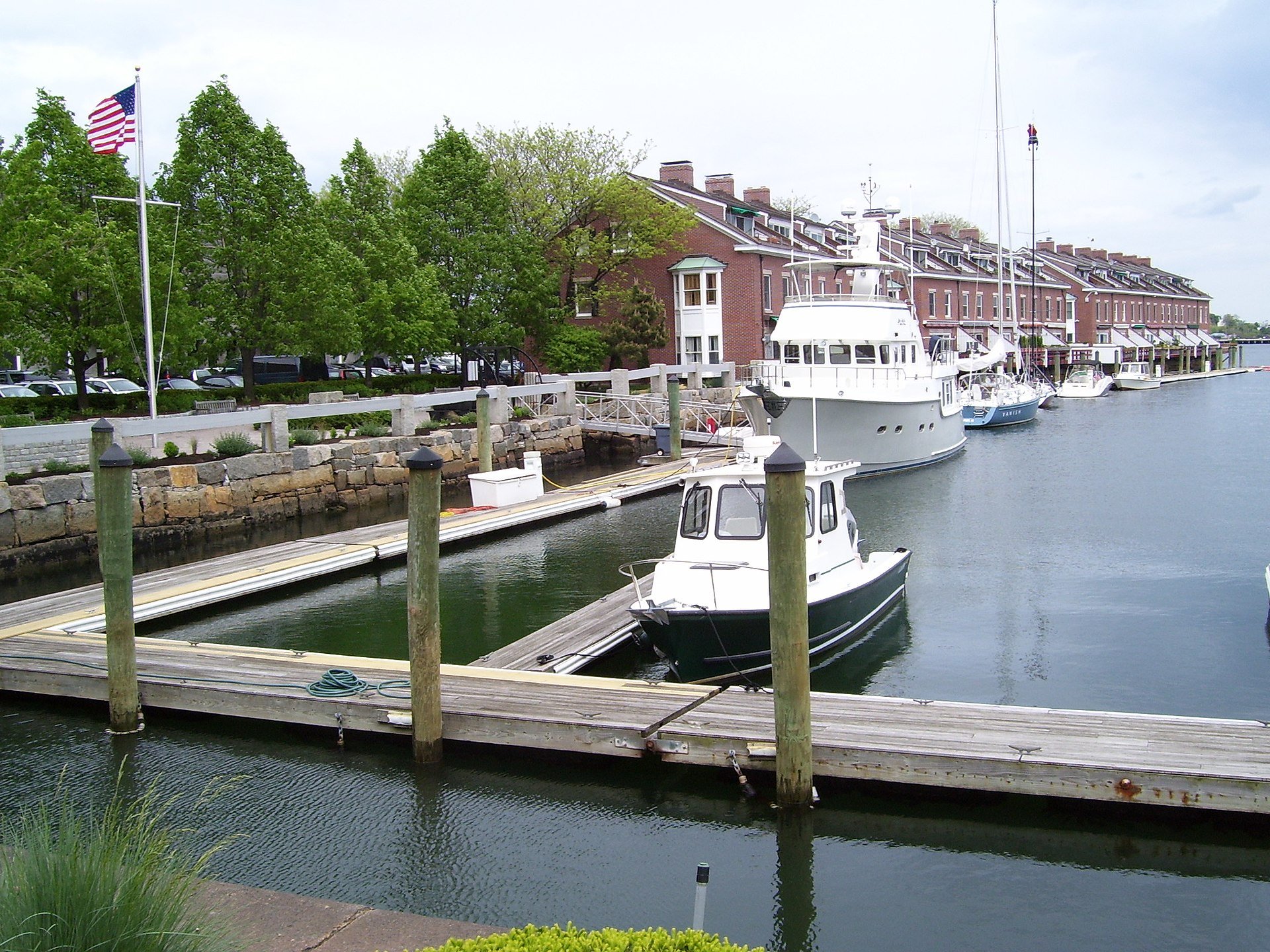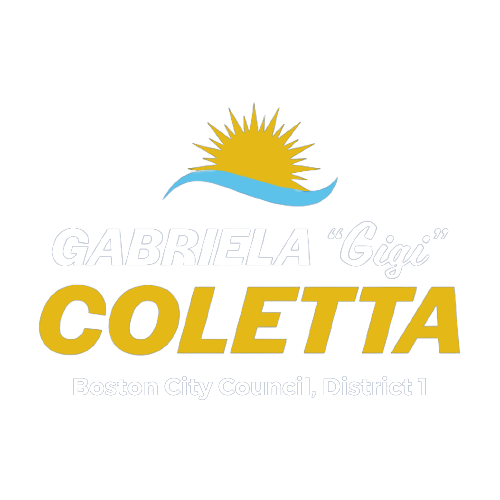
Environmental Justice & Climate Change
District One faces unique challenges as each neighborhood is a coastal community bearing a significant burden of intentional and generational environmental injustices. Regardless of race, ethnicity, or socioeconomic status, you should have the opportunity to participate in decisions about the things that affect your health and environment.
WATERFRONT:
According to a report from the First Street Foundation, Suffolk County faces the greatest risk of flooding with more than 45% of our critical infrastructure at risk, including hospitals, police, and fire stations. This is expected to increase by 20% by 2051. The City of Boston has a significant role to play in planning for our future with waterfront infrastructure investments to protect our District One neighborhoods.
District One’s waterfront is a historic and treasured resource and protected for all residents by the Public Waterfront Act (Chapter 91). As we prepare for sea-level rise due to climate change, we must prioritize waterfront planning and development that incorporates climate resilience, equity, and accessibility. I am pleased to see the recent announcement by Mayor Michelle Wu to launch a municipal harbor planning process for East Boston to create a predictable framework that prioritizes waterfront equity and resiliency. This is a welcomed first step; however, the entirety of Boston’s harbors and rivers must undergo the same planning process to truly protect our world-class city.
While we consider the next steps for both the Downtown Waterfront Municipal Harbor Plan and East Boston’s new process, there are significant lessons to be learned from the City’s prior MHP that took place between 2013 through 2017 both in the planning itself and community engagement.
Recommendations:
Approach this planning process with a holistic approach that is community-led. There must be an emphasis on centering the needs of residents for what their vision is for the waterfront. Lean on progress already made by the PLAN: East Boston initiative to ultimately shape a waterfront that offers affordable amenities including housing and commercial space, climate preparedness, and transit infrastructure connectivity. Look to residents as community experts, to help define that framework to which developers must adhere if they intend on building on our waterfront.
Utilize contemporary resilience strategies seen around the world. Taking a parcel-by-parcel approach to fortifying our coastline will not adequately address the urgent threat of coastal flooding. We must be able to meet the sea, on a district-wide scale, and use both passive and active permeable landscapes. We should work with academic partners like the UMass Boston Stone Living Lab and others to analyze the merits of large engineering solutions to sea-level rise, as applied in European cities such as Amsterdam, Rotterdam, and Venice. There is an opportunity to create living shorelines that act as waterfront classrooms for Boston Public Schools and community-based organizations.
Plan for the inclusion of all Bostonians to enjoy the waterfront, regardless of race, ethnicity, and socio-economic status. Every resident has ownership of access to our waterfront but one only has to walk the Harborwalk to see the disjointed and uninviting nature of Boston’s harbor. We must be intentional to foster a welcoming environment with signage available in all languages, as well as free or affordable waterfront programming for families. The planning process itself should include neighborhood-based visioning sessions with adequate translation services. Any benefits or protections negotiated by the community should be codified in the waterfront master plan with regular updates to ensure residents are receiving exactly what they deserve.
Additionally, as Councilor, I will also be pushing for a ‘waterfront czar’ position to help oversee planning while also ensuring there is an equity lens applied in the process. We must plan for the inclusion of all Bostonians to enjoy the precious and natural resources of the waterfront regardless of race, ethnicity, zip code, and socioeconomic status.
WATERFRONT TRANSPORTATION:
Water transportation or ferry service provides an opportunity for residents to move about the city without the use of a car and drastically reduces their individual contributions to emissions. Increasing this service reduces traffic and better connects neighborhoods beyond existing transit networks. East Boston, Charlestown, and the North End stand to benefit from an interconnected ferry system especially as we anticipate our bridges and tunnels to undergo construction in the coming months.
We should expand the existing ferry service to include more hours beyond morning and evening rush hour while reducing fares to enhance ridership. Let’s also explore workforce opportunities created by water transportation by connecting our young adults and residents to training programs directly related to the Blue sector or Blue tech industry jobs. As City Councilor, I will be sure to work with organizations like Boston Harbor Now, the Convention Center Authority, and other waterfront partners to ensure accessible and affordable ferry service in the coming year.
TREES / AIR QUALITY:
District One’s tree canopy is significantly lower than that of other neighborhoods. From Charlestown to East Boston, the ‘heat island’ effect disproportionately impacts BIPOC residents and those within low socio-economic census tracts. Breathing clean air shouldn’t be a luxury, especially as we bear the environmental burden of an international airport and throughway for regional traffic. We must increase our tree cover and double our efforts to plant new, healthy trees in environmental justice communities like East Boston and in areas of Charlestown. I fully support the City’s efforts to create the first Urban Forest Plan with policy and planning efforts that will outline guidelines for better tree canopy protection on public, private and institutional property.
There are less than three full-time employees who are responsible for the maintenance and planting of trees. As City Councilor, I will push for more investments in staff capacity in the tree unit within the Parks Department to restore our tree canopy at a faster rate. The City should work to empower more residents to beautify their block by streamlining the request process through the Parks Department. Let’s not let developers get away with cutting down trees in backyards, either. There’s a way to ensure tree preservation by negotiating against rear-yard setbacks and your City Councilor has a big impact ensuring that happens.
I would also work to expand the City’s Youth Green Jobs program, a pandemic-era program that built opportunities for under-employed young people by tackling pressing environmental challenges and developing the skills required to secure meaningful work. We can tap into this newly engaged group of young adults and returning citizens to aid in the planting of trees and other climate initiatives across the district.
In addition to expanding our tree canopy, I fully support Mothers Out Front East Boston’s call to have HEPA air filters installed in East Boston and across all of District One starting with our public schools. Researchers should have access to our classrooms to Austin Air HEPA filters that remove 75-82% of ultrafine pollution particles and can also remove COVID-19 virus from the air.
Due to compounding social determinants of health, our communities were uniquely vulnerable to an insidious respiratory illness that spreads at close contact. We have breathed in jet fuel’s ultrafine particulates for generations and have harmed our respiratory and cardiovascular systems. We know that air pollution disproportionately impacts BIPOC communities, as Latino and Black residents breathe in more of the pollution compared to their white counterparts who are exposed less. As City Councilor, I will always approach everything I do with an environmental justice lens to protect the collective health and wellness of my community and my neighbors.
CLEAN ENERGY AND PUBLIC UTILITY OVERSIGHT:
The climate crisis requires us to be bold in enacting policies that move Boston away from burning fossil fuels and strive for net-zero emissions. As City Councilor, I understand that we all have a responsibility to ensure future generations are guaranteed a clean environment with sustainable energy sources. I fully believe Boston can become a carbon-neutral, ‘Green New Deal city’ with urgent implementation of green policies, investments in the green workforce, and collaboration among local and state governments as well as community-based organizations.
The City of Boston should work to ensure new construction has elevated utilities and partner with public and private entities to build clean energy “microgrids” for backup power. Delivering power over a central grid is inefficient as up to almost 15% is lost during transit. A microgrid allows for the generation of power closer to those it will be dispersed. Community organizations are already doing incredible work to create these self-sufficient energy systems that produce power through various kinds of renewable energy sources like solar, wind, combined heat and power, and generations. They are also able to contain energy through battery storage systems that can be stored and utilized when customers need it the most.
We should implement solar, wind, hydropower renewable energies wherever possible. Let’s explore expanding community-based solarized programs by allowing renters to buy into and earn those credits despite not owning property. Boston should also look to utilize city-owned land for more solar farms and use our collective buying power to get discounted rates.
An electric substation has no place on the shoreline of an environmental justice community near gas tanks. Period. Eversource has contended that recent development mandates that a new substation be built but they have yet to produce an hour-by-hour need or any data to back up their claims. In fact, the Union of Concerned Scientists provided data from the New England power grid showing increased efficiency in new buildings and appliances. They’ve also failed to adequately engage non-English speaking populations in the community. They did not provide translation in early community engagement outreach efforts and it is unacceptable to move forward until everyone has access to the same information in their native language.
We have seen time and time again that our community is overburdened by polluting energy infrastructures with a lack of intentional community outreach to residents who do not speak English. This perpetuates the cycle of injustice by not allowing residents to voice their concerns, ask questions of major energy corporations, and fully understand the impacts on their health and wellbeing.
I fully support H.336 sponsored by Representative Adrian Madaro, requires the following: advanced notice to relevant parties before formally proposing a new energy facility, adds environmental justice, public health, and climate to the Energy Facility Siting Board’s responsibilities, adds new members with environmental justice experts, and many other provisions. I also support Senator Lydia Edwards Home Rule Petition entitled, “An Act to Secure Environmental Justice in the City of Boston” that would make three targeted changes to Boston’s Zoning Enabling Act for better environmental protection against public utility companies.
BERDO COMPLIANCE AND OVERSIGHT:
In October 2021, Acting Mayor Kim Janey signed into law the Boston Building Emissions Reduction and Disclosure Ordinance (BERDO). BERDO allows the City greater authority to set carbon targets for existing buildings with the goal of achieving net-zero emissions by 2050. It also encourages efficient use of energy and water and develops significant investments in the green economy. Now, we must hold major actors accountable through the Emissions Review Board alongside local organizations like GreenRoots, Alternatives to Community and Environment, Inc., and others. These organizations should have a seat at the table with their expertise and provide an equity lens to decisions related to the newly established Equitable Emissions Investment Fund.
MASSPORT:
I grew up attending protests against airport runway expansion in the 1990’s with my mother, Nina. Community activism is in my DNA and it doesn’t stop short at any Massport boundary. My highest priority will be accountability; I will join my partners in the state delegation to hold MassPort to their obligations as good neighbors. East Boston has numerous levers of negotiation to receive the compensation and dignity residents deserve. The community should have the opportunity to review agreements made, access these documents in perpetuity, and be notified when certain programs are set to expire.
